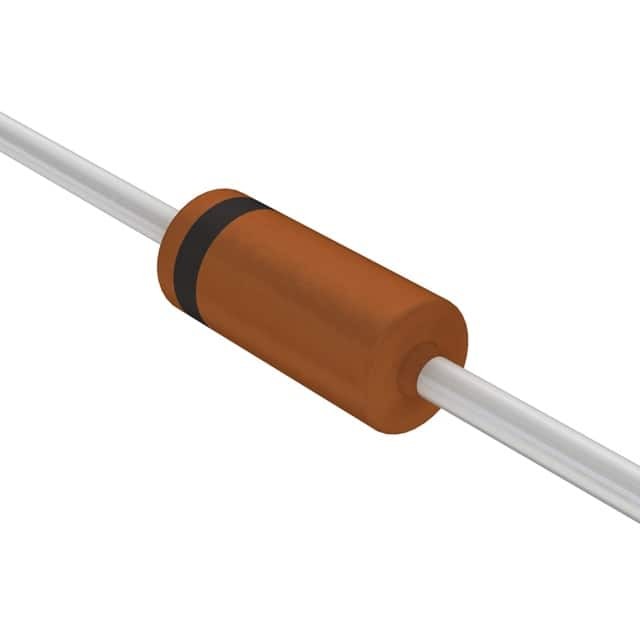BZX79-C39,143
Product Overview
Category
The BZX79-C39,143 belongs to the category of Zener diodes.
Use
It is commonly used for voltage regulation and protection in electronic circuits.
Characteristics
- Zener voltage: 39V
- Power dissipation: 500mW
- Package: DO-35
- Tolerance: ±5%
- Operating temperature range: -65°C to +200°C
Packaging/Quantity
The BZX79-C39,143 is typically available in reels or bulk packaging with varying quantities depending on the supplier.
Specifications
- Zener voltage: 39V
- Power dissipation: 500mW
- Maximum forward voltage: 1.1V
- Reverse current: 5μA
- Temperature coefficient: 5mV/°C
Detailed Pin Configuration
The BZX79-C39,143 Zener diode has two pins and follows the standard DO-35 package pinout configuration.
Functional Features
The BZX79-C39,143 provides a stable and precise voltage reference, making it suitable for applications requiring consistent voltage regulation. It also offers protection against voltage spikes and surges.
Advantages and Disadvantages
Advantages
- Precise voltage regulation
- Protection against voltage spikes
- Wide operating temperature range
Disadvantages
- Limited power dissipation capability
- Relatively low tolerance compared to other Zener diodes
Working Principles
The BZX79-C39,143 operates based on the Zener effect, where it maintains a constant voltage across its terminals when reverse-biased, allowing it to regulate voltage in electronic circuits.
Detailed Application Field Plans
The BZX79-C39,143 is widely used in various electronic applications, including: - Voltage regulators - Overvoltage protection circuits - Signal clamping circuits - Voltage references
Detailed and Complete Alternative Models
Some alternative models to the BZX79-C39,143 include: - BZX79-C36,143 (Zener voltage: 36V) - BZX79-C43,143 (Zener voltage: 43V) - BZX79-C47,143 (Zener voltage: 47V)
In conclusion, the BZX79-C39,143 Zener diode is a reliable component for voltage regulation and protection in electronic circuits, offering precise voltage references and safeguarding against voltage spikes. Its wide application field and availability of alternative models make it a versatile choice for various electronic designs.
Word count: 298
Lista 10 Vanliga frågor och svar relaterade till tillämpningen av BZX79-C39,143 i tekniska lösningar
What is the BZX79-C39,143?
- The BZX79-C39,143 is a series of Zener diodes designed for voltage regulation and protection in various technical solutions.
What is the voltage rating of BZX79-C39,143?
- The BZX79-C39,143 has a nominal voltage rating of 39V.
What are the typical applications of BZX79-C39,143?
- Typical applications include voltage regulation, overvoltage protection, and signal clamping in electronic circuits.
What is the power dissipation of BZX79-C39,143?
- The power dissipation of BZX79-C39,143 is typically around 500mW.
How does BZX79-C39,143 provide overvoltage protection?
- BZX79-C39,143 conducts current when the voltage across it exceeds its rated voltage, effectively shunting excess voltage to protect downstream components.
What is the temperature coefficient of BZX79-C39,143?
- The temperature coefficient is typically around -2.2mV/°C, indicating a relatively stable voltage reference over a range of temperatures.
Can BZX79-C39,143 be used in reverse-biased mode?
- Yes, BZX79-C39,143 can be used in reverse-biased mode for voltage regulation and protection purposes.
What is the maximum forward voltage of BZX79-C39,143?
- The maximum forward voltage is typically around 1.5V at a specified forward current.
Is BZX79-C39,143 suitable for low-power applications?
- Yes, BZX79-C39,143 is suitable for low-power applications due to its moderate power dissipation and voltage regulation capabilities.
Are there any specific layout considerations when using BZX79-C39,143 in a circuit?
- It's important to ensure proper heat dissipation and minimize trace lengths to maintain accuracy and stability in voltage regulation applications.


